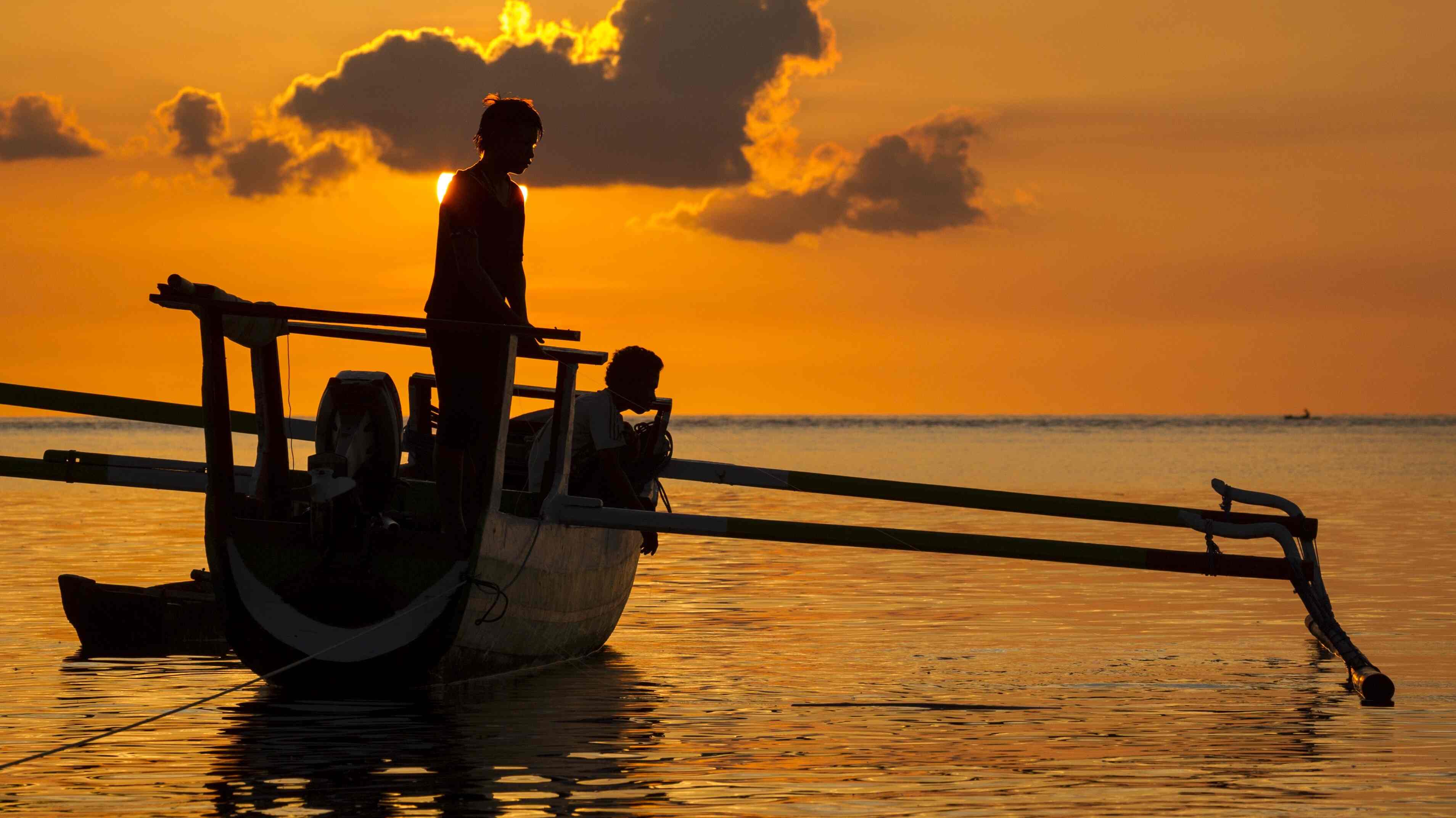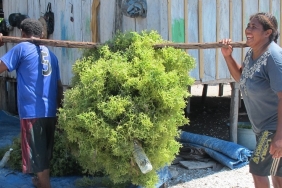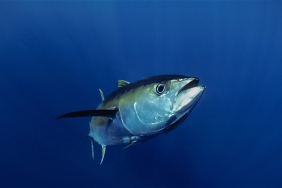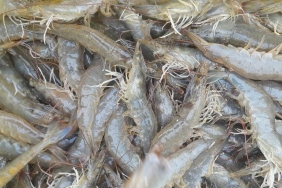TRAWLERS AND SEINE TRAWLERS, THE GAINERS THE LOSERS
Thousands of fishermen to this day still harbor a sense of rejection even though a number of protests have been carried out through various means. Of the many protests, fishermen from the North Panti waters of Java have been the most vocal in rejecting Minister of Marine Affairs and Fisheries Regulation No. 2/2015 on the Prohibition of the Use of Trawls and Seine Nets because most fishermen still use modified trawl nets such as cantrang, dogol, lamparan and arad. (Read: Information Sheet on Hela Trawls and Tug Trawls)
"The ban on cantrang is tantamount to killing the livelihood of fishermen. Not to mention those affected by the baskets who obviously will not get fish from fishermen," said Chairman of the Tegal City Fishermen Association (PNKT) H Eko Susanto, as reported by Antara last January (31/1/15). Similarly, businessmen have also attacked the regulation, which is considered to be strangling their necks. Losses due to declining demand for trawl and cantrang fishing gear and materials, as well as a lack of fishmeal and fish feed because there are no more trawlers and cantrang that used to supply raw materials. Accusations were made that the protests on behalf of 'traditional' fishermen were ordered by these companies. "It is impossible for them to use trawl nets, because their boats will not be able to pull the nets. To pull cantrang or trawl nets, you have to use a large ship above 30 GT, and that is only owned by entrepreneurs," said Indonesian Marine Council (DEKIN) member Hanafi Rustandi, as reported in RMOL, early March (5/3/15).
No doubt the economic factor is still a scapegoat that triggers conflict from Minister Susi Pudjiastuti's breakthrough. The first and main consideration of the Ministry of Maritime Affairs and Fisheries in issuing this regulation is the decline and threat of fish resources due to the operation of trawl fishing gear and its modifications including cantrang so far so that its use must be prohibited. This normative statement is believed to be a powerful recipe to overcome the problem of Indonesia's fisheries availability which is heading towards a nadir, a benefit that benefits the national fisheries sector.
The results of the WWF-Indonesia study stated that only about 18-40% of trawl and cantrang catches are economically valuable and can be consumed, 60-82% are bycatch (bycatch) or not utilized (discard), so most of the catch is thrown into the sea dead. The use of trawlers by dredging the bottom of the water to destroy habitat and the use of small meshes also leads to the capture of various types of biota that are still juvenile or not yet mature gonads. This waste of resources has occurred continuously since this gear was widely used in the 1960s. (Read: WWF: Trawling Threatens Sustainability of Marine Resources)
Trawl and cantrang catches are not selective with a catch composition that captures all sizes of fish, shrimp, crabs, and other biota. Immature gonads and spawning biota that are caught cannot reproduce to produce new individuals. This condition causes stock depletion or stock reduction of fish resources, the catch will decrease, this is the first destructive impact.
The operation of trawlers and cantrang that dredge the bottom of deep and coastal waters without exception coral reefs and damage the spawning sites of marine biota. Although Cantrang avoids coral reefs, small groups of live coral on the bottom of the water will be washed away. This disrupts and damages the productivity and habitat of biota on the bottom where the bottom is an important habitat in the sea because it consists of coral reef ecosystems, seagrasses, and sand or mud substrates.
Fourth, fish resources in the waters of the Java Sea are degraded due to the dense fishing activities from various regions including the use of trawl and cantrang fishing gear.
Economic and Ecological Costs
The use of trawlers and cantrang will harm small-scale fishers directly and indirectly. Small-scale fishers who use bottom longlines cannot fish for 3 days to 1 week if a location has been swept by the pull of trawlers and cantrang (Survey Results on Net-Nusantara Fishermen in Takalar, November 2013). If trawlers and cantrang continue to operate at a location, then other small-scale fishers cannot fish due to conflicts over fishing areas and the decline of fish resources in the area and its surroundings.< br />
Statistical data from the Ministry of Maritime Affairs and Fisheries (KKP), said the number of trawl and cantrang fishing gear was around 91,931 units in 2011. Then small fishermen without boats, boats without engines, and outboard engine boats amounted to 396,724 fishermen, who operated in the same 0-12 mile path as the trawl and cantrang fishing areas. If calculated with the family members of these small fishermen as assumed by KNTI, then there are about 2 million small fishermen families throughout Indonesia feeling the impact of these losses.
Studies of fisheries resource stocks conducted in Indonesia in the western and central regions show declines in demersal fish stocks and habitat destruction due to destructive fishing. In general, the impact of this damage has been detrimental to the Indonesian nation, and may only benefit a small number of entrepreneurs and trawl or cantrang fishers.
Seeing the damage to fisheries resources and the loss of most small fishermen in Indonesia, the regulation banning trawl and cantrang should have been implemented long ago. Because since 25 years ago, the government has issued Presidential Decree Number 39 of 1980 concerning the Elimination of Trawl Nets to avoid social tensions and economic and ecological losses.
The lack of enforcement has been costly for the current government, as there are many adverse impacts that must be corrected. The losses of Trawl and Cantrang users are not at all balanced with the losses that have been experienced by the nation so far. The preservation of fisheries resources and sustainable utilization for the prosperity of all Indonesian people should be the first and foremost consideration.
Author: Muhammad Yusuf - National Coordinator for Fisheries Research and Development
Source of the article:
- Aidy, Y. 2003. Analysis of the Distribution of Demersal Fish Caught with Cantrang Nets in the Waters of Demak Regency. Thesis. Diponegoro University, Semarang.
- Badrudin, Aisyah, N.N. Wiadnyana. 2010. Stock Abundance Index and Utilization Rate of Demersal Fish Resources in the Java Sea WPP. Final Report, Ministry of Research and Technology and Ministry of Marine Affairs and Fisheries, Jakarta.
- Badrudin, Aisyah, N.N Wiadnyana.
- Chaerudin, A. 2006. Proportion of Bycatch of Mini Trawl Based in the North Coast of Cirebon City. Thesis Bogor Agricultural University, Bogor.
- Ministry of Marine Affairs and Fisheries 2013.
- Decree of the Minister of Marine Affairs and Fisheries of the Republic of Indonesia Number Kep.06/Men/ 2010 concerning Fishing Gear in the State Fisheries Management Area of the Republic of Indonesia
- Presidential Decree of the Republic of Indonesia Number 39 of 1980 on the Elimination of Trawl Nets
- Minister of Marine Affairs and Fisheries Regulation Number 42/Permen-KP/2014 Concerning the Fourth Amendment to the Regulation of the Minister of Marine Affairs and Fisheries Number per.02/MEN/2011 Concerning Fishing Lines and Placement of Fishing Gear and Fishing Aids in the Fisheries Management Areas of the Republic of Indonesia
- R.T. Cahyani. 2013. Study on the Use of Cantrang towards the Preservation of Demersal Fish Resources in TPI Wedung Demak. Thesis. Diponegoro University. Semarang.
- Sudirman, Musbir, I. Nurdin, R Sihbudi. 2005. Description of Cantrang Fishing Gear, Analysis of Bycatch, Discard, and Size Composition of Fish Caught in Takalar Waters. Torani Journal, Hasanuddin University, Makassar.
- "The Now-Banned Cantrang Net", Antara News. Accessed March 24, 2015.
- "Maritime Council Accuses Big Company of Riding on Fishermen Rejecting Cantrang Nets". Republika Media Online. Accessed March 24, 2015.
- Website http://regional.kompas.com/read/2015/03/03/17464311/Protes.Kebijakan.Menteri.Susi. Thousands.of.Fishermen.Block.Pantura.Line?utm_source=news&utm_medium=bp-kompas&utm_campaign=related&. Accessed March 10, 2015.
- Website http://bisniskeuangan.kompas.com/read/2015/02/26/162600826/Diminta.Lengser.oleh. Fishermen. Here's What.Susi.Says. Accessed February 26, 2015.
- Website http://industri.bisnis.com/read/20150309/99/410034/larangan-alat-tangkap-cantrang-kkp-sarankan-eks-abk-bentuk-kelompok-dan-koperasi. Accessed March 11, 2015.
- Website http://radior2b.com/2015/01/24/sekretaris-hnsi-setuju-nelayan-membelot/#sthash. o6tKLnIn.dpbs. Accessed March 11, 2015.
- http://www.penabahari.com/?p=1521 Accessed March 11, 2015.
- Website http://www.solopos.com/2015/03/04/penertiban-nelayan-soal-pelarangan-cantrang-knti-minta-semua-pihak-menahan-diri-582277 Accessed March 11, 2015





